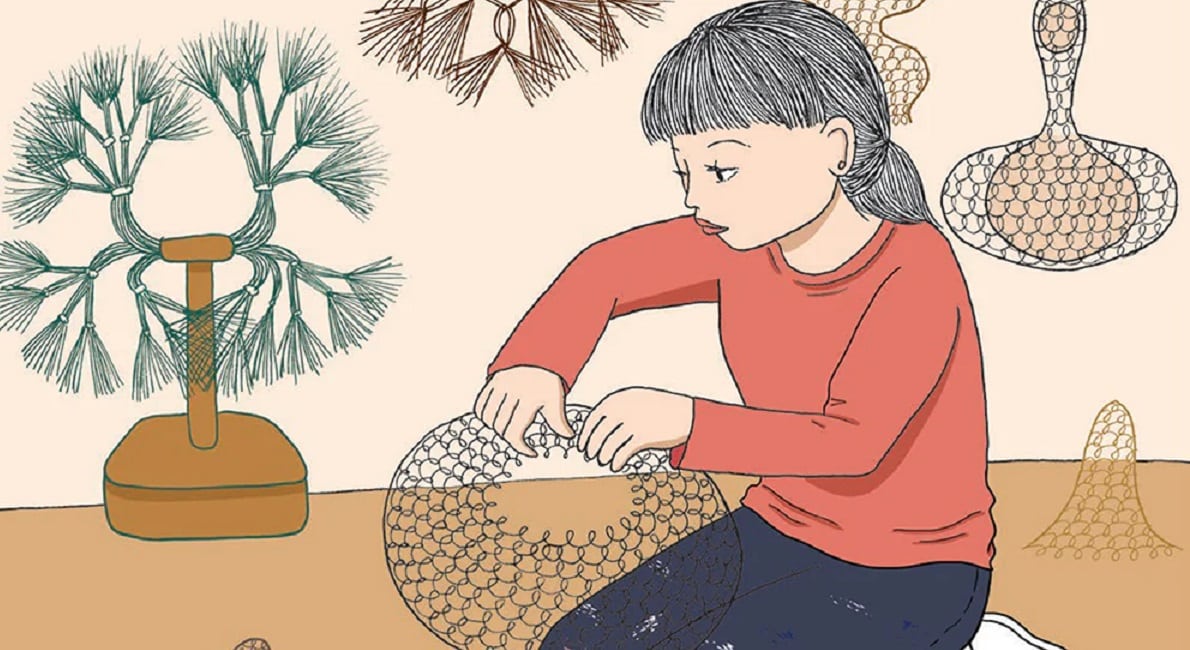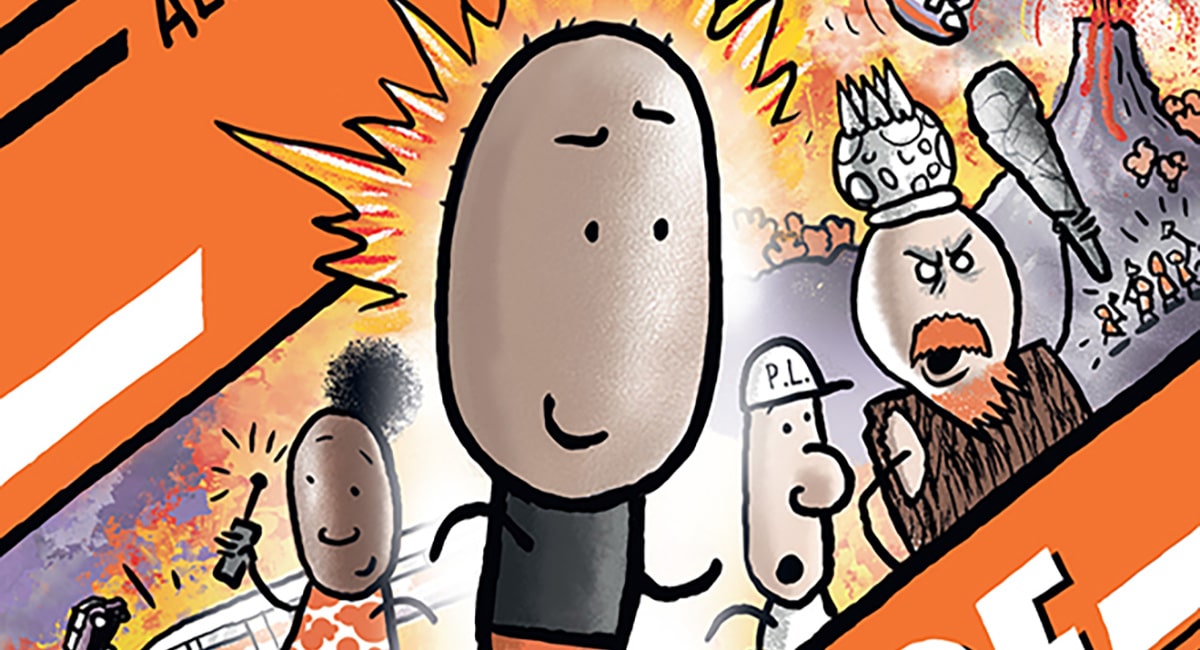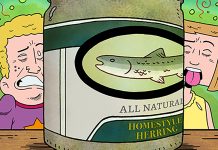 Love: The Mastiff
Love: The Mastiff
Written by Frederic Brremaud
Illustrated by Federico Bertolucci
Publisher: Magnetic Press
The Australian outback is not a place for a casual stroll. Oh sure, it’s where you find sand goannas, koalas and kangaroos. And the adorable quokka. But there aren’t many people about, it’s hot, dry and dusty in most places, and even where it’s cool and shady you’re apt to meet with all kinds of crawling death. In the outback they sort their death adders into two distinct categories: the common and the desert. Then there’s the inland taipan, by reputation the world’s deadliest snake. They say its venom can kill 100 people, and, if anything that lethal calls the outback home, when you go there you keep your eyes open and your head on a swivel.
It’s not just the fauna. Raw places are elemental places. Exposure and dehydration threaten. Experts say you can survive about 3 days without water, maybe 3 weeks without food. If you avoid the adders and taipans you’ll find things to eat. If you’re quick enough you could possibly eat a death adder. Not recommended. In 2015 a camel hunter spent six miserable days lost in the outback. Incredibly, not only did he stay alive without water the entire time but he also ate ants. I’ve never eaten an ant but I understand they’re sour.
That’s disappointing. I’d always imagined ants to be more a savory dish.
It’s best not to get yourself lost in the outback as a rule. In Love: The Mastiff, the title character of this lovely yet thrilling graphic novel of pure animal adventure doesn’t have a choice. When a poisonous snake kills his master during a hunting trip, the mastiff must find his own way home. Along the way he encounters a full complement of Australian animals, and you’ll experience every bit of his exhausting ordeal. There’s zero dialogue in this story. There aren’t even any sound effects. There is only the dog determinedly padding along on this survival journey through an untamed land.
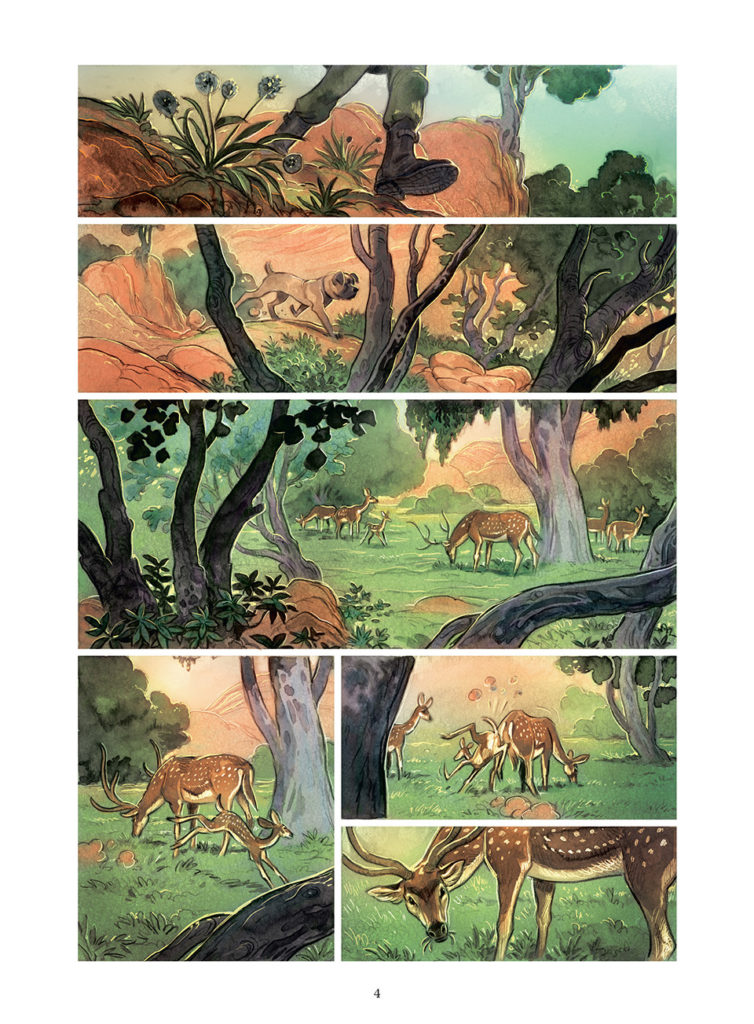
But even as a survival tale it’s not simply the story of one lost dog. For this fifth entry in their award-winning wordless nature series, writer Frederic Brremaud and artist Federico Bertolucci fill out the Australian wilderness using observational and narrative skills worthy of Marty Stouffer or the filmographers who shot Sir David Attenborough’s BBC 1979 nature docuseries Life on Earth. Beyond its central narrative this book teems with predator and prey. A koala fends off a wedge-tailed eagle. Snakes slither around to the detriment of tiny rodents. Kangaroos bound through the brush. A wombat and its joey race the dingoes to safety. Things live or die according to the dictates of each encounter. My favorite is instantly the platypus, an important secondary character. The platypus doesn’t know or care what we think of it, as it just does its regular platypus errands.
Brrenaud and Bertolucci weave these narratives around and through an environment especially tough on the helpless or the weak. But they do so unflinchingly and largely without imposing value judgements. Even the dingo pack who function as the mastiff’s recurring antagonists are simply being dingoes. Other animal feast on each other, or try to. This is simply the way of things in the outback, and, expanding ever outward, the natural world as a whole.
The complete lack of text in Love: The Mastiff allows Bertolucci to further demonstrate several levels of artistic virtuosity. As illustrations his panels are breathtaking. From the first view of a panoramic valley baking under a hazy, haloed sun to the softly glowing lights of a house on the edge of a forest, these images are as sharply focused as any award-winning photograph of the real outback. Bertolucci’s vision of the outback has a heightened realism of brilliant blues, burning reds, and the welcoming coolness of leafy shadows and running water. It provides an almost tactile sense of being there, a specificity of time and place. With a naturalist’s attention to species-specific anatomy and body language Bertolucci communicates directly to the reader the drama inherent in the story’s many confrontations. If you’ve ever wanted to see a furious koala in battle mode here’s your big chance. Our friend the platypus has an almost animated waddle. What really impresses, though, is the way Bertolucci conveys all this excitement without humanizing the animals in the least.
Love: The Mastiff is an action-packed journey that might remind you of those old Disney nature films where the predators never seem to catch a break (or a wombat) and the folksy-voiced narrator reassures everyone that it’s all part of the cycle of life or the miracle of creation or something equally wholesome and bloodless. Except this story comes from a starker place, a universe not necessarily of “chaos and murder” as director and narrator Werner Herzog would have it in his classic 2005 documentary Grizzly Man, but someplace where you may not find comforting aphorisms or necessarily a happy ending meant to soothe our feelings as we sit on the family sofa in front of a television tuned to Animal Planet. If there’s kindness in this outback it comes from a more primitive, unformed place. This is a canine Naked Prey, a Castaway on four legs or Man in the Wilderness starring a fine, furry boy instead of Richard Harris. Stunning, powerful, and suspenseful.
Published by Magnetic Press, Love: The Mastiff goes on sale June 15, 2021


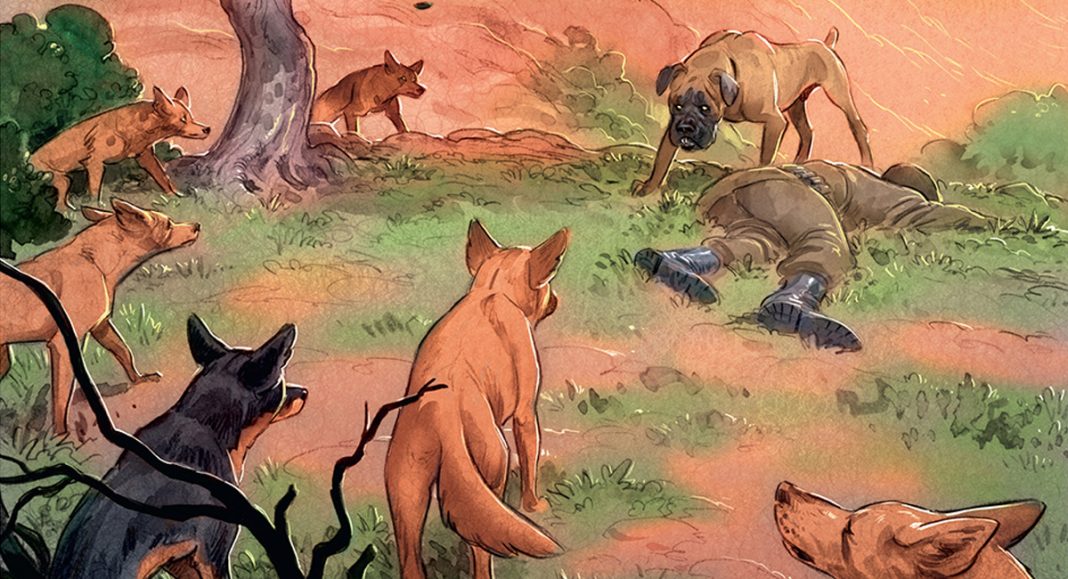
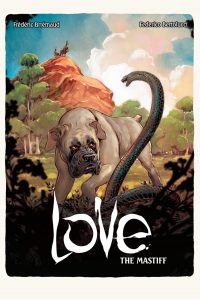 Love: The Mastiff
Love: The Mastiff